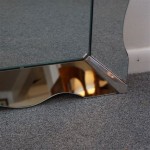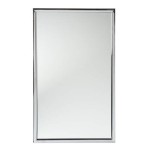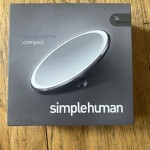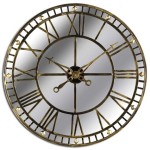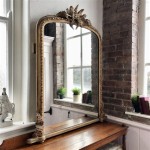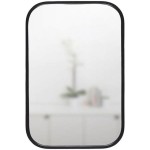How To Hang a Heavy Mirror On a Wall Without Studs
Hanging a heavy mirror securely, especially when studs aren't readily available, requires careful planning and the right hardware. This article outlines the steps and considerations involved in this process, ensuring a safe and stable mounting for your mirror.
Understanding Wall Anchors
Wall anchors are essential when hanging heavy objects on walls without stud support. They provide a stronger hold than screws alone by distributing the weight across a larger area of the wall. Several types of wall anchors are available, each suited for different wall materials and weight capacities. Choosing the correct anchor is crucial for the mirror's stability.
Toggle bolts are a robust option for hollow walls, such as drywall. They consist of a bolt and a spring-loaded toggle wing that expands behind the wall, creating a secure anchor point. For heavier mirrors, heavy-duty toggle bolts are recommended. Another option is the molly bolt, which also expands behind the wall to provide a strong grip. Concrete walls require specialized anchors like concrete screws or wedge anchors. Always check the weight capacity of the chosen anchor to ensure it exceeds the mirror’s weight.
Preparing the Wall and Mirror
Before beginning the installation process, accurate measurements are vital. Determine the desired position of the mirror on the wall and mark the hanging points. Use a level to ensure the markings are perfectly horizontal. If the mirror has a hanging wire or D-rings, measure the distance between them to ensure the placement of the anchors aligns correctly.
Once the hanging points are marked, prepare the wall for the anchors. For toggle bolts or molly bolts, drill pilot holes of the correct size, as specified by the anchor manufacturer. For concrete anchors, a hammer drill and the appropriate drill bit are usually required. Clean away any dust or debris from the drilled holes before inserting the anchors.
The mirror itself may require preparation as well. Some mirrors come with pre-installed hanging hardware, while others may require the addition of D-rings or wire. Ensure that any added hardware is rated for the weight of the mirror. Carefully follow the manufacturer's instructions for installing any necessary hardware.
Installing the Anchors and Hanging the Mirror
Insert the chosen anchors into the prepared holes in the wall. For toggle bolts, push the toggle through the hole until it flips open behind the wall, then tighten the bolt to secure it. For molly bolts, tighten the screw to expand the anchor within the wall. Follow the manufacturer’s specific installation instructions for each anchor type. Once the anchors are securely in place, hang the mirror on the installed hardware. Ensure that the mirror is evenly balanced and rests securely on the anchors.
For exceptionally heavy mirrors, consider using more than two anchors. Distributing the weight across multiple anchors can greatly enhance stability and reduce the risk of the mirror falling. If the mirror is particularly large or awkward to handle, enlist the help of another person to assist with the lifting and positioning. After hanging the mirror, double-check its stability by gently applying pressure to various points. If the mirror feels secure and doesn't wobble, the installation is successful.
Alternative Hanging Methods for Heavy Mirrors
For very heavy mirrors, alternative hanging solutions may offer added security. French cleats, consisting of two interlocking wooden or metal pieces, can distribute the weight effectively across a larger wall area. A portion of the cleat is attached to the wall, and the matching piece is attached to the back of the mirror. The two pieces interlock to create a secure and stable hang.
Another option is the use of a mirror mounting system. These systems typically involve a metal track mounted to the wall with multiple brackets that support the mirror. This method is especially beneficial for large, heavy mirrors as it offers enhanced stability and adjustability. Mirror mounting systems generally require more extensive installation but provide a robust and secure hanging solution. Always choose a mounting system with a weight capacity that exceeds the weight of the mirror.
Safety Considerations
Safety should always be a primary concern when hanging heavy objects. Always wear appropriate safety glasses when drilling and handling anchors. Ensure the wall material is suitable for the chosen anchor type and weight of the mirror. If unsure about any aspect of the installation process, consult a professional handyman or contractor. Proper installation and the right hardware are essential for preventing accidents and ensuring the long-term stability of the hanging mirror.

How To Hanging A Mirror Without Stud Heavy

How To Hang A Large Or Heavy Mirror

How To Hang A Heavy Mirror C R F T

A Better Way To Hang Heavy Mirror Hanging Pictures

How To Hang Heavy Items Without A Stud

How To Hang Heavy Wall Decor Green With

How To Hang A Heavy Mirror

How To Hang A 31kg Mirror On Wall With Bunnings Work Community

How To Hang A Heavy Mirror Or Picture True Value

How To Hang A Very Heavy Picture Or Mirror The Best

